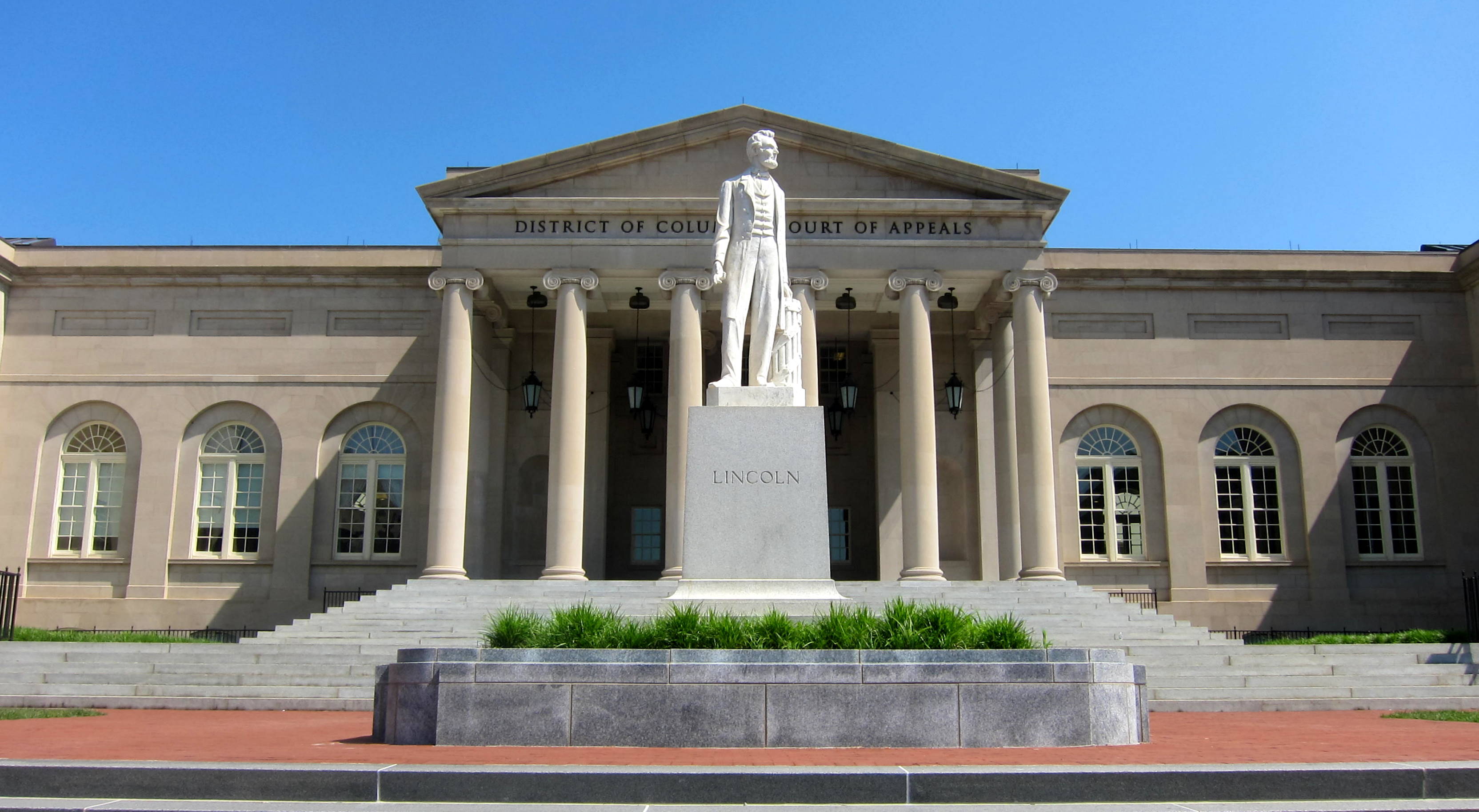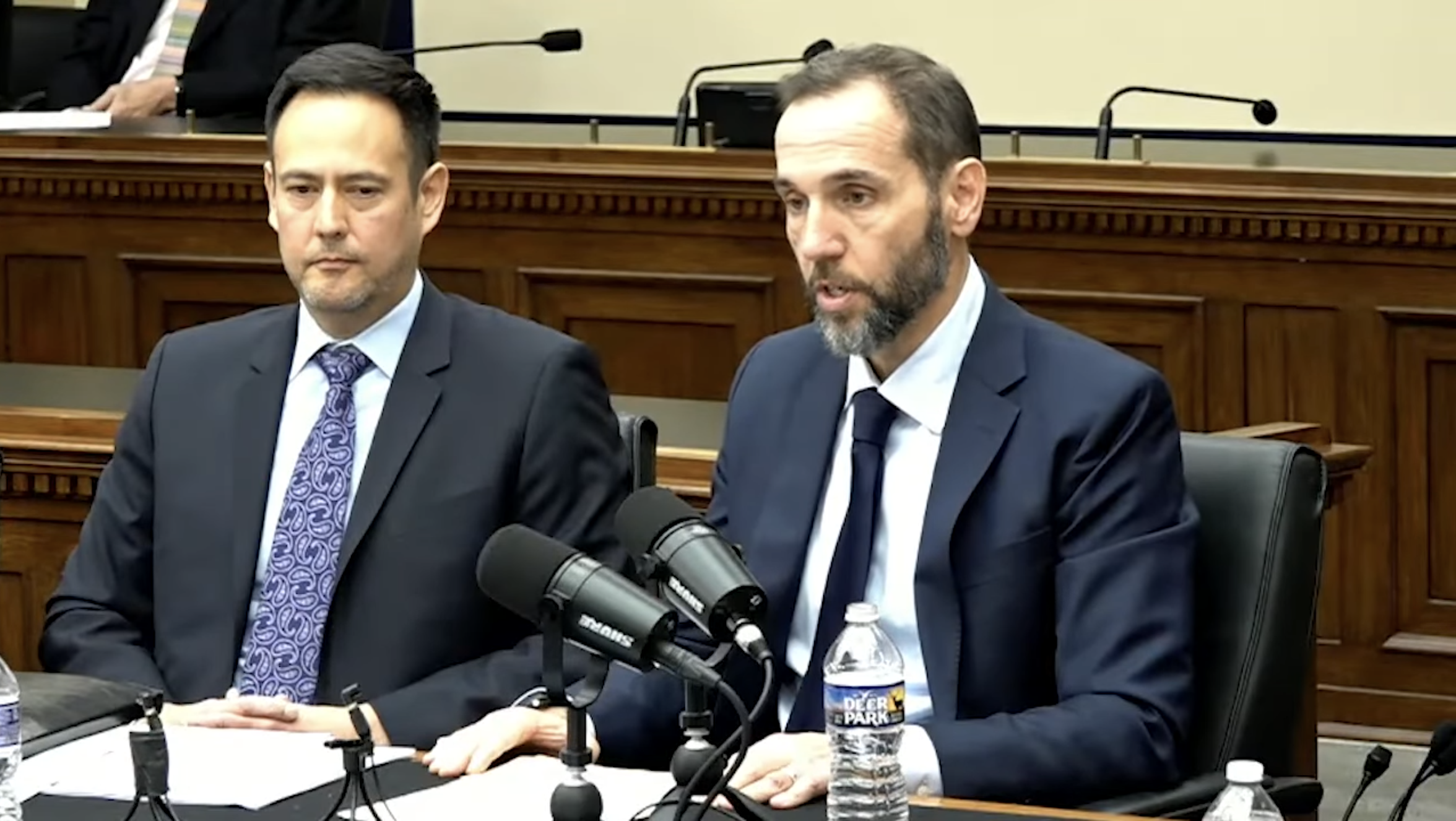A Crucial Appeal for Capitol Riot Prosecutions: D.C. Circuit to Hear Arguments Challenging the Felony Charge Used in 290 Cases
If an appellate panel affirms the dismissals of the charges in the trilogy of cases involving Jan. 6 rioters on Dec. 12, it would needlessly annihilate hundreds of Capitol siege charges aimed at exceedingly serious conduct.

Published by The Lawfare Institute
in Cooperation With

On Dec. 12, the U.S. Court of Appeals for the District of Columbia Circuit will hear arguments in a case that holds the potential to upend literally hundreds of felony prosecutions stemming from the Jan. 6 Capitol insurrection.
The matter is an appeal by the government of a trilogy of consolidated cases involving three rioters: Joseph Fischer, Garret Miller, and Edward Jacob Lang. The defendants allegedly stormed the Capitol on Jan. 6, 2021, in an effort to halt or delay the joint session of Congress that was then due to certify the 2020 presidential election. Prior to trial, U.S. District Judge Carl J. Nichols dismissed a count against each defendant alleging corrupt obstruction of an official proceeding under 18 U.S.C. §1512(c)(2)—the felony charge leveled most frequently in prosecutions arising from the Capitol siege. Nichols ruled that the statute’s broad language needs to be read in a very narrow way that would exclude the conduct alleged in these cases. The government then brought immediate 'interlocutory' appeals of the dismissals.
If Nichols’s decision is upheld, it’s hard to overstate the mammoth wrench it would throw into the Justice Department’s nearly two-year campaign to bring Capitol rioters to justice. Of the more than 910 individuals whohave been charged with federal crimes stemming from that event, more than 290 have been charged with corrupt obstruction of an official proceeding. At least 70 rioters have already been convicted of that offense (or of conspiring to commit it), according to the George Washington University Program on Extremism. Among the latter are a number of high-profile defendants who pleaded guilty to that charge alone, including Jacob Chansley (the so-called QAnon Shaman); at least four members ofthe paramilitary Oath Keepers organization, two of whose leaders were found guilty of seditious conspiracy in November; and at least four members of the Proud Boys gang, whose leaders are set to stand trial for seditious conspiracy laterthis month.
Nevertheless, there is reason to anticipate that such an upheaval will not come to pass. For one thing, no other judge in the United States has interpreted the statute in the same way that Nichols has. At least 15 of his colleagues on the federal district court in Washington, D.C., have upheld the use of this charge in Capitol riot cases, and none has joined Nichols in rejecting it. In addition, according to the Justice Department’s appellate brief, at least six federal circuit courts of appeals have upheld convictions under 18 U.S.C. §1512(c)(2) that would not have been possible under Nichols’s narrow reading, while no federal circuit court has endorsed Nichols’s interpretation.
The panel hearing Monday’s appeal will consist of Circuit Judges Gregory Katsas, Justin Walker, and Florence Pan, who were appointed by, respectively, Presidents Trump, Trump, and Biden.
Here’s the statute in question:
(c) Whoever corruptly—
(1) alters, destroys, mutilates, or conceals a record, document, or other object, or attempts to do so, with the intent to impair the object’s integrity or availability for use in an official proceeding; or
(2) otherwise obstructs, influences, or impedes any official proceeding, or attempts to do so,
shall be fined under this title or imprisoned not more than 20 years, or both.
A separate provision of the law (18 U.S.C. §1515(a)(1)(B)) defines “official proceeding” to include a “proceeding before the Congress,” a definition that—as Nichols acknowledged—appears to encompass the Jan. 6 joint session.
So what’s the problem? The government says there is none. Section 1512(c)(2) bars “corruptly … obstruct[ing], influenc[ing], or imped[ing] any official proceeding”—language that, on its face, seems to reach the alleged conduct of the hundreds of Capitol rioters who have been charged with this offense, including the three directly involved in this appeal. At the time when the Jan. 6 congressional joint session was supposed to be taking place, defendant-appellee Joseph Fischer allegedly entered the Capitol, “rushed a line of police officers while yelling ‘Charge’ and ‘Motherfuckers,’” and then “crashed into the police line, causing multiple people, including at least one officer, to fall to the ground.” Defendant-appellee Garret Miller allegedly entered the Capitol during roughly the same time period and pushed against a line of officers inside the Rotunda. Finally, defendant-appellee Edward Jacob Lang tried to enter the Capitol through the Lower West Terrace tunnel archway—where the most violent fighting occurred that day—and, over a period of hours, “pushed, kicked, and punched officers, at times using a bat or a stolen riot shield,” according to the government’s appellate brief. In addition, each of the defendants made statements, both before and after the insurrection, evincing an intent to stop or delay the certification of the election. Lang, for instance, boasted in a media interview the day after the riot that he’d been on “‘a mission to have the Capitol building’” and to “‘stop the presidential election from being stolen,’” adding: “‘It was war. This was no protest.’”
Nevertheless, Nichols read the statute to not reach this conduct. He did so after homing in with laser-like intensity on the word “otherwise” at the beginning of clause (c)(2). He decided that to read clause (c)(2) as broadly as other judges had would render the word “otherwise” to be mere “surplusage”—that is, unnecessary. The most plausible way to give the word “otherwise” meaning, he concluded, was to read clause (c)(2) as a narrow catch-all clause for conduct very similar to that described in clause (c)(1). Since clause (c)(1) outlawed “alter[ing], destroy[ing], mutilat[ing], or conceal[ing] a record, document, or other object,” he reasoned that clause (c)(2) only outlawed other acts in which the defendant had “taken some action with respect to a document, record, or other object in order to corruptly obstruct, impede or influence an official proceeding” (emphasis added).
For more detail on how Nichols reached that seemingly non-intuitive conclusion, I wrote a close analysis of his reasoning when he dismissed this count from defendant Miller’s indictment in March—his first such ruling. I will not rehearse that article here. Suffice it to say that Nichols’s analysis involves bringing to bear a number of more-or-less arcane statutory interpretive canons, including those known as “ejusdem generis”; “noscitur a sociis”: the “elephants in mouseholes” doctrine; and the “rule of lenity.”
The government, for its part, argues that all of these interpretive canons are properly invoked only to “‘resolve ambiguity, not to create it.’” Accordingly, it argues that Nichols has inappropriately imported an “extratextual gloss” into a clause for which the plain text is quite clear.
Although Nichols’s dismissal orders were tightly drawn, the appeal may raise broader questions. This is because, somewhat unexpectedly, the defendants’ brief invites the appellate panel to venture off in multiple directions that Nichols never did. At times it appears as if their counsel are throwing a great many arguments against the wall to see what sticks.
This is a risky strategy. On the one hand, if the appellate judges have concerns about the way the Justice Department is handling these cases and want to intervene, the defense brief offers them an array of pegs on which to hang their hats. On the other hand, the defense counsel’s blunderbuss strategy could also give the appearance that even they think Nichols’s ruling is indefensible. Perhaps that’s why they seem to be running away from it and offering alternative bases for dismissal.
While the defendants’ brief does nominally defend Nichols’s interpretation of clause (c)(2), it argues even more forcefully in favor of a different, and inconsistent, interpretation. Their preferred interpretation—based principally on historical arguments about the evolution of the many different obstruction of justice laws that Congress has enacted over the decades—is one that would import a requirement that the defendants’ conduct must involve some attempt to “impair evidence,” though not necessarily one that would, as in Nichols’s formulation, require “tak[ing] some action with respect to a document, record or other object.” (While the defendants here were accused of trying to block the entire proceeding from going forward, there was no allegation that they tried to “impair evidence” that might be presented at the proceeding.)
The defendants apparently believe that the D.C. Circuit panel might be more receptive to the evidence-impairment gloss on clause (c)(2) because it would be reconcilable with the six other federal court of appeals rulings that are notreconcilable with Nichols’s document-related gloss. Those rulings all upheld convictions under 18 U.S.C. §1512(c)(2) for conduct that did notinvolve taking “some action with respect to a document, record, or other object,”yet did involve potential impairment of evidence. For instance, one defendant had attempted to secure a false alibi witness, while another had solicited information about a grand jury investigation from corrupt local police officers.
Still, no judge has ever adopted the evidence-impairment interpretation, and Nichols specifically rejected it.
Before the defendants are done, they also broach a couple other issues that—while certainly not frivolous—do not seem squarely presented by these cases. One is the issue of precisely how to define “corruptly” for purposes of both clauses of §1512(c). While there has been some disagreement about that important issue among federal circuit courts, the district judges in Washington, D.C., have interpreted it uniformly and, in any case, the issue played no role in Nichols’s dismissal decisions.
In a final argument, the defendants contend that the government’s straightforward, broader interpretation of §1512(c)(2)—the one accepted by 15 other federal district judges—leads to “absurd results.” Here they point out that a number of protesters who entered the Capitol on Jan. 6, but swiftly exited without engaging in violence, were charged with class A misdemeanors, like entering a restricted building (maximum sentence of one year in jail), and then offered a deal whereby they could plead guilty instead to a class B misdemeanor (maximum sentence of six months). Corrupt obstruction of an official proceeding, in contrast, carries a maximum term of 20 years in prison.
So the very fair question arises: Where exactly do prosecutors draw the line? When does conduct pass from being a minor misdemeanor into a major felony?
To be sure, prosecutors appear to be using the felony charge responsibly. All three of the defendants involved in this appeal, for instance, are accused of violence. Indeed, all three are charged with additional felony counts besides obstruction of an official proceeding, including assaulting and impeding police officers. Still, prosecutors have charged some rioters with obstruction of an official proceeding who do not stand accused of independent felonies or violence. While aspects of these rioters’ cases seem aggravated in various ways—for example, they spent unusually long periods of time within the Capitol; they were among the first rioters to enter the building; they penetrated all the way into the Senate Gallery or Speaker Nancy Pelosi’s suite—nobody knows for certain precisely which straw or straws broke the camel’s back, converting these defendants’ conduct from a misdemeanor to a felony. That lack of clarity may trouble some judges, perhaps even to the point of spurring them to narrow clause (c)(2) by hook or by crook—regardless of its plain text.
Still, the government argues with force that there’s no injustice here demanding a remedy. Because the statute requires proof of the defendant’s “corrupt” state of mind and of his or her intent to obstruct, influence, or impede an official proceeding, defendants are on notice about what constitutes the crime. Those same elements act as adequate guardrails against arbitrary exercise of prosecutorial discretion.
If a majority of Monday’s appellate panel votes to affirm the dismissals of the charges in these cases, its motivating concern will likely be the fuzziness of that boundary between minor misdemeanor and major felony conduct. Still, such an affirmance would require tortured readings of plain and unambiguous text, and would needlessly annihilate hundreds of Capitol siege charges aimed at exceedingly serious conduct.
There’s no cause for panic just yet. It’s doubtful that this panel—though conservative—will affirm Nichols’s dismissals. Rewriting plain statutory text is not conservative jurisprudence.
Furthermore, even a ruling against the government by this panel would almost certainly trigger en banc review by the full U.S. Court of Appeals for the D.C. Circuit. A full complement of judges would provide a second and greater chance for cooler heads to prevail.





